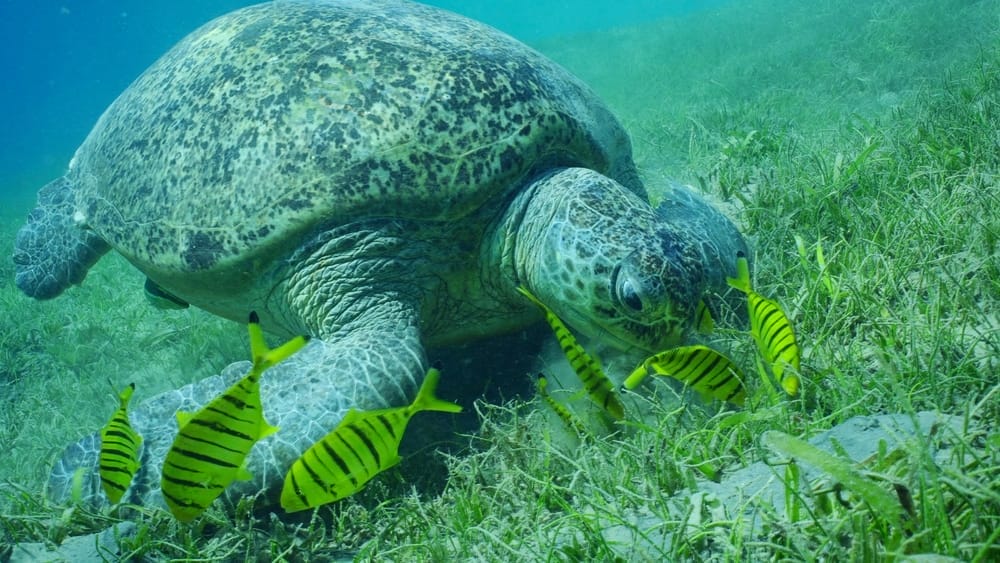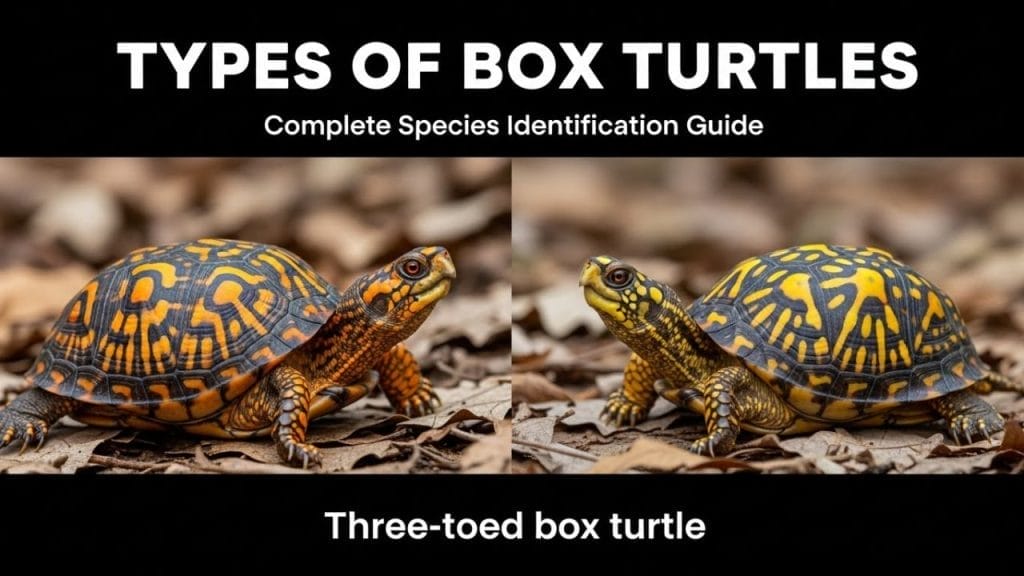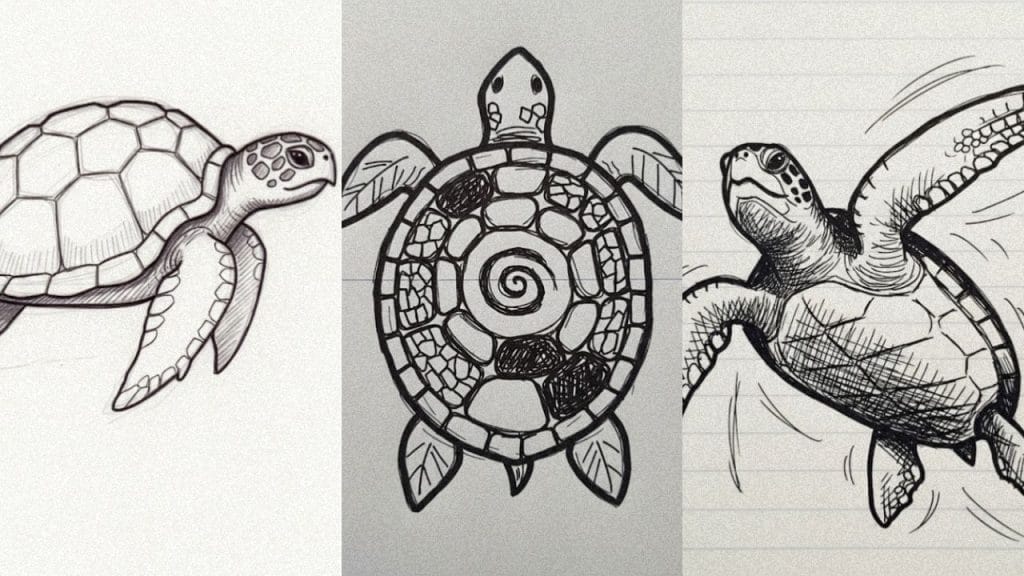Metabolic Bone Disease In Turtles [Causes, Prevention, Treatment]

This post was created with help from AI tools and carefully reviewed by a human (Muntaseer Rahman). For more on how we use AI on this site, check out our Editorial Policy.
If you ever see a turtle dragging its legs like spaghetti noodles or looking like its shell was sculpted by a toddler—chances are, you’re looking at metabolic bone disease (MBD).
This isn’t just a “whoops, forgot the calcium” kind of problem. MBD can mess up your turtle’s bones, shell, muscles, and pretty much everything in between. Worst part? Most turtle keepers have no clue it’s happening until it’s already serious.
That’s why I’m breaking it all down—what causes MBD, how to spot it early, and what you can actually do to fix it (or better yet, prevent it).
Let’s not wait till your turtle’s legs look like limp noodles, yeah?
Need To Talk With A Turtle Vet Right Now?
What Is Metabolic Bone Disease In Turtles?
Metabolic bone disease is more of an umbrella term. Conditions like osteoporosis, osteomalacia, and Metabolic bone disease (MBD) in turtles is a condition where their bones, shell, and muscles weaken or become deformed because their body can’t use calcium properly.
It usually happens when they don’t get enough calcium, vitamin D3, or UVB light. Without these, their bones soften, shells warp, and basic movement becomes painful.
Think of it as their whole skeleton system slowly falling apart because the nutrients just aren’t getting to the right places.
MBD is one of the most common health issues in pet turtles, especially among beginners who don’t understand proper UVB and calcium requirements.
6 Causes Of MBD (Metabolic Bone Disease) In Turtles
I do not think you can blame only one reason for metabolic bone disease in turtles. Instead, several You can’t point to just one thing and say, “Yep, that’s what caused it.”
MBD usually sneaks in because of a bunch of issues piling up. Here’s what usually goes wrong:
1. Not Enough Calcium
Turtles need calcium to build strong shells and bones. If they don’t get enough, their body starts pulling calcium from their own bones just to keep basic functions running.
That’s how you end up with soft shells, weak legs, and a turtle that can barely move without wobbling.
2. Vitamin D3 Deficiency
Vitamin D3 helps turtles absorb calcium. No D3 = calcium just passes through like a guest who never unpacks. Turtles get D3 from certain foods and from UVB exposure.
Without it, their bones can’t grow right—even if they’re eating plenty of calcium.
3. Messed-Up Mineral Balance
More isn’t always better. Too much phosphorus in the diet blocks calcium absorption. That means your turtle could be eating a balanced meal on paper, but still ending up with weak bones because the nutrients aren’t being used properly.
4. No UVB Light
Sunlight, or more specifically, UVB rays, help turtles produce vitamin D3 in their skin. No UVB = no D3 = no calcium absorption = hello MBD. This is one of the most common causes, especially for indoor turtles.
One study even found that chemical pollution (like PFAS) in wild turtles may mess with calcium balance, raising MBD risk. Nature’s not safe either.
Proper calcium and vitamin D levels are important for preventing MBD. A 2021 study investigated the bioaccumulation and effects of PFAS mixtures in wild freshwater turtles, finding certain PFAS compounds can interfere with calcium homeostasis and potentially increase MBD risk.
5. Low Tank Temperatures
Cold turtles = slow turtles. Not just in movement, but digestion too. If the temperature’s too low, their body won’t break down food properly, and nutrients don’t get absorbed.
That includes calcium and D3, making MBD more likely.
6. Underlying Illnesses
Sometimes MBD isn’t the main problem—it’s a side effect. Things like liver disease, kidney failure, thyroid issues, or gut problems can all mess with nutrient absorption and calcium regulation.
This Hilarious Turtle Book Might Know Your Pet Better Than You Do
Let’s be real—most turtle care guides feel like reading a textbook written by a sleep-deprived zookeeper.
This one’s not that.
Told from the snarky point of view of a grumpy, judgmental turtle, 21 Turtle Truths You’ll Never Read in a Care Guide is packed with sarcasm, sass, and surprisingly useful insights.
And hey—you don’t have to commit to the whole thing just yet.
Grab 2 free truths from the ebook and get a taste of what your turtle really thinks about your setup, your food choices, and that weird plastic palm tree.
It’s funny, it’s honest, and if you’ve ever owned a turtle who glares at you like you’re the problem—you’ll feel seen.
How Can You Spot MBD (Metabolic Bone Disease) In Your turtle?
Unlike many other diseases, MBD is very visible. So do not worry about thinking that your turtle is sMBD isn’t some silent, invisible illness. It shows up loud and clear—if you know what to look for. Here are the most common signs:
- Soft or squishy shell
- Splayed or weak legs
- Limping or jerky walking
- Bent spine or flat shell
- Overgrown or crooked beak
- Swollen limbs or joints
- Jaw deformities
- Paralysis (in serious cases)
- Constipation or cloaca issues
- Lethargy and loss of appetite
You might also notice your turtle dragging itself instead of walking, or not being able to retract into its shell. If the shell looks too tight or oddly shaped, that’s another red flag.
And here’s the brutal part—if you ignore these signs, it only gets worse. The shell can put pressure on the organs, cause pain, and even lead to permanent damage or death.
So if your turtle looks “off,” don’t brush it off. MBD doesn’t fix itself.
A 2023 study characterized the osteodensitometry and tomographic findings in four captive giant South American turtles (Podocnemis expansa) with MBD. The study described bone density measurements and bony changes seen in the turtles, providing insights into diagnosing and managing MBD.
How To Diagnose Metabolic Bone Disease In Turtles?
You can’t just eyeball it and call it a day. Sure, the symptoms scream MBD, but a proper diagnosis needs more than guesswork.
Here’s how vets confirm it:
- X-rays: Shows how dense (or hollow) the bones really are. MBD makes them look cloudy, thin, or warped.
- Bone density scans: Checks how strong the skeleton is. Weak bones = clear warning sign.
- Blood tests: Looks for low calcium, high phosphorus, or messed-up vitamin D3 levels.
- Medical history + setup review: Vets will ask about your turtle’s diet, lighting, and past illnesses to spot the root cause.
Basically, if your turtle’s shell feels soft or the limbs look weird—get it checked fast. Waiting only gives MBD more time to wreck your pet.
What Are The Available Treatments for Metabolic Bone Disease?
Treating MBD isn’t about popping a pill and calling it a day. It’s a full reset—diet, lighting, and sometimes medical help.
Severe cases require veterinary care and specific antibiotics for turtles to prevent secondary infections in weakened animals.
Here’s what the treatment usually looks like:
Supplement shots or oral meds:
Vets often start with calcium or vitamin D3 injections if the case is serious. In mild cases, they may go with oral supplements instead.
UVB light therapy:
If your turtle’s been living in the dark, this is non-negotiable. A strong UVB bulb (or sunlight) helps the body make vitamin D3 so it can start using calcium properly again.
Diet correction:
No more junk. The turtle needs calcium-rich food, fewer phosphorus-heavy items, and a clean feeding schedule. Leafy greens, cuttlebone, and the right pellets go a long way.
Force-feeding (in extreme cases):
If your turtle stops eating, the vet might have to step in with syringe feeding to keep it alive during recovery.
Hospitalization (if things are bad):
For turtles that are totally immobile or paralyzed, vets may keep them under close care to monitor progress and hydration.
The key? Catch it early. The sooner you start treatment, the better the odds of reversing the damage. If you wait too long, the deformities might stick around for good.
Can You Prevent MBD (Metabolic Bone Disease) in Turtles?
Absolutely—and honestly, prevention is way easier than fixing the mess later.
Here’s what I do (and what you should too):
Give them proper UVB lighting:
No UVB, no vitamin D3. No vitamin D3, no calcium absorption. Simple math. Outdoor turtles get it from the sun. Indoor ones need a good UVB bulb—no cheap knockoffs.
Feed a balanced diet:
Your turtle isn’t a trash can. Give it leafy greens, veggies, and calcium-rich foods. Sprinkle in supplements a few times a week if needed. And always watch that calcium-to-phosphorus ratio—aim for 2:1.
Add safe calcium sources:
Cuttlebone, reptile-safe powder, or blocks with zero shady additives. They should have access to it regularly.
Keep the temps right:
Cold turtles don’t digest well. Bad digestion = poor nutrient absorption. Maintain a proper basking spot (85–95°F) and a good temperature gradient (75–85°F) across the tank.
Don’t skip routine checks:
Watch for soft shells, weak limbs, or weird walking. Catching it early means you can fix it before it becomes a lifelong problem.
A little setup effort now saves your turtle from a ton of suffering later. Trust me—this is one of those “better safe than sorry” deals.
Case Studies That Show the Real Impact of MBD on Turtles
If you think MBD is just a minor bump in a turtle’s life, these real-life cases will change your mind. Here’s what happens when things go wrong—and how proper care can sometimes turn it around:
Case Study 1: Giant South American Turtles (Podocnemis expansa)
In 2023, researchers ran CT scans on four captive Podocnemis expansa turtles showing MBD symptoms. The scans revealed serious bone demineralization, warped shells, and low bone density.
These turtles had lived in poor indoor conditions—bad lighting, weak diet, and no UVB. The study confirmed that even large, hardy species aren’t immune when the basics are ignored. It also highlighted the use of CT and bone density imaging for diagnosis and monitoring.
Case Study 2: Rescue Rehab Turnaround
A rescue center received a juvenile red-eared slider with splayed legs, a soft shell, and barely any movement. Diagnosis showed advanced MBD.
Treatment included:
- UVB lighting for 10+ hours daily
- Calcium injections weekly for a month
- A high-calcium, low-phosphorus diet
- Gradual temperature adjustment
After 3 months, the turtle regained mobility and started basking again. The shell remained slightly deformed, but the progression stopped completely. This case shows that early treatment and consistent care can save a turtle’s life—even if the full damage can’t be undone.
Case Study 3: MBD Triggered by a Failing UVB Bulb
An owner kept a young yellow-bellied slider under what they thought was a working UVB bulb. But the bulb was over a year old and barely giving off any UVB.
The turtle developed jaw softening and had trouble biting food. Blood tests confirmed low vitamin D3 and calcium. After replacing the bulb and starting oral calcium drops, the turtle’s symptoms stabilized within 2 weeks.
This case highlights how even small lapses—like not replacing a bulb—can have serious consequences.
These stories aren’t just for drama—they’re reminders that MBD is real, preventable, and fixable… if you act in time.

About Author
Muntaseer Rahman started keeping pet turtles back in 2013. He also owns the largest Turtle & Tortoise Facebook community in Bangladesh. These days he is mostly active on Facebook.

















